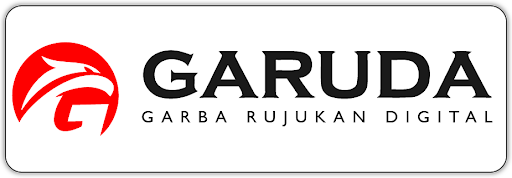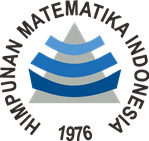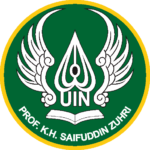Enhancing Junior High School Students’ Mathematical Understanding through Augmented Reality Media Using Assemblr Edu: A Development Study
DOI:
https://doi.org/10.24090/ijrme.v3i1.13438Keywords:
Assemblr Edu, Augmented Reality, Learning Media, Mathematical Understanding AbilityAbstract
Mathematical understanding ability is one of several basic mathematical abilities to be mastered and improved by students. Good mastery of this ability can support the development of advanced mathematical abilities. However, the students at SMPN 1 Paguyangan demonstrated low levels of mathematical understanding, which was partly due to monotonous lecture-based instruction and the rare use of interactive media to aid comprehension. This study aimed to develop Augmented Reality (AR)-based mathematics learning media using Assemblr Edu that were valid and effective in improving the mathematical understanding ability of ninth-grade students at SMPN 1 Paguyangan. The study employed a Research and Development (R&D) approach using the ADDIE model (Analysis, Design, Development, Implementation, Evaluation). The results showed that the AR-based mathematics learning media developed using Assemblr Edu for the topic of "Three-Dimensional Shapes with Curved Surfaces" were declared valid and feasible, with scores of 80% from material experts, 91.6% from media experts, and 94.5% from mathematics teachers. Student responses were also positive, with average scores of 80.54% in the small group test and 78.48% in the field test. Furthermore, the pretest and posttest data were analyzed using an independent samples t-test, which produced a significance value of 0.000 (p < 0.05), leading to the rejection of H₀ and acceptance of H₁. The experimental group achieved an average N-Gain score of 0.771 (categorized as “High”), while the control group obtained a score of 0.357 (“Medium”), indicating that the developed learning media effectively improved students’ mathematical understanding.References
Anderson, R. (2007). Being a Mathematics Learner: Four Faces of Identity. The Mathematics Educator, 17(1), 7–14.
Arena, F., Collotta, M., Pau, G., & Termine, F. (2022). An Overview of Augmented Reality. Computers, 11(2). https://doi.org/10.3390/computers11020028
Dare, E. A., Keratithamkul, K., Hiwatig, B. M., & Li, F. (2021). Beyond Content: The Role of STEM Disciplines, Real-World Problems, 21st Century Skills, and STEM Careers within Science Teachers’ Conceptions of Integrated STEM Education. Education Sciences, 11(11), 737. https://doi.org/10.3390/educsci11110737
Golzar, J., Noor, S., & Tajik, O. (2022). Convenience Sampling. International Journal of Education and Language Studies, 1(November), 72–77.
Gusteti, M. U., & Neviyarni, N. (2022). Pembelajaran Berdiferensiasi Pada Pembelajaran Matematika Di Kurikulum Merdeka. Jurnal Lebesgue : Jurnal Ilmiah Pendidikan Matematika, Matematika Dan Statistika, 3(3), 636–646. https://doi.org/10.46306/lb.v3i3.180
Hendriana, H., Rohaeti, E. E., & Sumarmo, U. (2017). Hard Skills dan Soft Skills Matematik Siswa (N. F. Atif (ed.)). Refika Aditama.
Kebudayaan, K. P. dan. (2017). Model Silabus Mata Pelajaran Sekolah Menengah Pertama/Madrasah Tsanawiyah (SMP/MTs).
Kharis, S. A. A., Salsabila, E., & Haeruman, L. D. (2021). Effect of Mathematical Concept Understanding and Mathematical Reasoning on Mathematical Literacy Abilities. Journal of Physics: Conference Series, 1747(1). https://doi.org/10.1088/1742-6596/1747/1/012042
Khoerunnisa, A., & Hidayati, N. (2022). ANALISIS KEMAMPUAN PEMAHAMAN MATEMATIS. PHI: Jurnal Pendidikan Matematika, 6(1), 1. https://doi.org/10.33087/phi.v6i1.180
Malik, A. (2018). Pengantar Statistika Pendidikan Teori dan Aplikasi. 466.
Meriyati, Nitin, M., Bradford, S., & Wiliyanti, V. (2024). The Impact of Applying Augmented Reality Technology in Learning on Student Learning Experiences. Journal Emerging Technologies in Education, 2(2), 215–228. https://doi.org/10.70177/jete.v2i2.1067
Nafi’ah, U., Sapto, A., Sayono, J., & Herdiani, A. (2022). Peningkatan Kapasitas Guru dalam Mengembangkan Media Pembelajaran Berbasis Augmented Reality untuk Menyelaraskan Pembelajaran Sejarah dengan Kebutuhan Masa Kini. Historia: Jurnal Pendidik Dan Peneliti Sejarah, 5(1), 49–56. https://doi.org/10.17509/historia.v5i1.38950
Nuryadi, Astuti, T. D., Utami, E. S., & Budiantara, M. (2017). Dasar-Dasar Statistik Penelitian. Sibuku Media.
Purwanto, M. N. (2007). Psikologi Pendidikan. Remaja Rosdakarya.
Putri, F. T. (2020). Generasi Hebat Generasi Matematika. NEM.
Ramadhani, R., & Bina, N. S. (2021). Statistika Penelitian Pendidikan: Analisis Perhitungan Matematika dan Aplikasi SPSS. Kencana.
Sari, I. P., Batubara, I. H., Hazidar, A. H., & Basri, M. (2022). Pengenalan Bangun Ruang Menggunakan Augmented Reality sebagai Media Pembelajaran. Hello World Jurnal Ilmu Komputer, 1(4), 209–215. https://doi.org/10.56211/helloworld.v1i4.142
Sugiyono. (2013). Metodologi Penelitian Kuantitatif, Kualitatif dan R & D. Alfabeta.
Suhati, T., Hendrawan, B., & Permana, R. (2023). Pengembangan Media Pembelajaran SOLCAR Berbantuan Assemblr Edu Untuk Meningkatkan Hasil Belajar IPA Materi Sistem Tata Surya Kelas VI Sekolah Dasar. JERUMI: Journal of Education Religion Humanities and Multidiciplinary, 1(2), 108–115. https://doi.org/10.57235/jerumi.v1i2.1248
Suryani, N., Setiawan, A., & Putria, A. (2018). Media Pembelajaran Inovatif dan Pengembangannya. Remaja Rosdakarya.
Syed, T. A., Siddiqui, M. S., Abdullah, H. B., Jan, S., Namoun, A., Alzahrani, A., Nadeem, A., & Alkhodre, A. B. (2023). In-Depth Review of Augmented Reality: Tracking Technologies, Development Tools, AR Displays, Collaborative AR, and Security Concerns. MDPI, 23(146), 1–54. https://doi.org/10.3390/s23010146
Wulandari, A. P., Salsabila, A. A., Cahyani, K., Nurazizah, T. S., & Ulfiah, Z. (2023). Pentingnya Media Pembelajaran dalam Proses Belajar Mengajar. Journal on Education, 5(2), 3928–3936. https://doi.org/10.31004/joe.v5i2.1074
Wulandari, S., Izzatin, M., & Mucti, A. (2023). Media Pembelajaran Matematika (Pengantar dan Pemanfaatan Potensi Wilayah Pesisir Sebagai Media Pembelajaran Matematika). Syiah Kuala University Press.
Downloads
Published
How to Cite
Issue
Section
License
Copyright (c) 2025 Dwi Sofiatul Mukaromah, Fitria Zana Kumala, Joannah Mae C. Sardido

This work is licensed under a Creative Commons Attribution-ShareAlike 4.0 International License.
Authors who publish with this journal agree to the following terms:
Authors retain copyright and grant the journal right of first publication with the work simultaneously licensed under a Creative CommonsAttribution-ShareAlike License that allows others to share the work with an acknowledgment of the work's authorship and initial publication in this journal.
Authors are able to enter into separate, additional contractual arrangements for the non-exclusive distribution of the journal's published version of the work (e.g., post it to an institutional repository or publish it in a book), with an acknowledgment of its initial publication in this journal.
Authors are permitted and encouraged to post their work online (e.g., in institutional repositories or on their website) prior to and during the submission process, as it can lead to productive exchanges, as well as earlier and greater citation of published work (See The Effect of Open Access).












